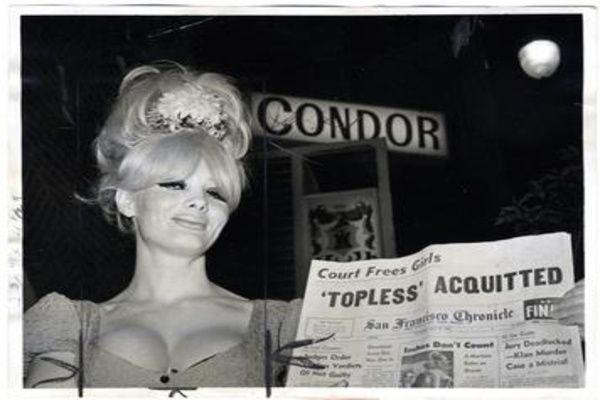For this week's installment of #TBT, we focus on some of the obscure, shady, and downright criminal goings-on of the San Francisco yesteryear.
The Barbary Coast, for instance, was full of vice. Bootlegging and gambling were commonplace in speakeasies during Prohibition, and a slew of shocking crimes—before and since—have made spines tingle all across America.
The Muni Streetcar Conductor with 18 Wives
Vintage Press Photos/eBay
1930s photo of Van Wie
Francis H. Van Wie, dubbed "The Ding Dong Daddy of the D Car Line," the "Car Barn Casanova," and the "Trolley Toreador," was actually the Muni streetcar conductor of the 22 Fillmore (but the former sounded catchy to the San Francisco Chronicle). In the 1940s, Van Wie took advantage of the shortage of men in San Francisco during WWII, wooing and marrying several women, bothering to divorce none. His matrimonial spree started in 1904, and in 1945, he was found guilty of bigamy (serving time in San Quentin, only to be arrested for bigamy again in Los Angeles in 1952.) In total, Van Wie is said to have had 18 wives.
▲Where the term "Shanghaied" Comes From
via Outgress
Shanghai Kelly's Saloon on Polk St.
During the days of the Barbary Coast, James "Shanghai" Kelly would drug unsuspecting patrons enjoying a drink at his saloon, open a trap door in the floor to capture them, and then sell them as laborers to ships sailing to faraway places such as Shanghai. He is credited as being the "King of Crimps" and once Shanghaied 100 people who attended his booze cruise birthday party.
▲The Crooked Political Boss of San Francisco
via The Energy Net
Known as "Boss," Abe Ruef was as SF-born lawyer and politician who, at one point, controlled the city. He tried to get Chinese immigrants kicked out of Chinatown, handpicked and puppeteered Mayor Eugene Schmitz, and also gained control of several judges, the board of supervisors, and the chief of police. In 1907, Ruef plead guilty to bribery after all the supervisors testified that they received money from Ruef in connection with various shady deals having to do with, among other things, gas rates and prize fighting.
▲The Madam Who Became Mayor
From 1940 to 1949, Sally Stanford was the top madam in the city, running a bordello at 1144 Pine Street. Later, Stanford became a restaurateur, opening the Valhalla in Sausalito. At the age of 72, she was elected Sausalito's mayor.
▲The Great Diamond Hoax of 1872
Swindles seemed to be commonplace in the early years of San Francisco. The Great Diamond Hoax of 1872 involved two cousins, prospectors John Slack and Philip Arnold. The pair got prominent San Franciscans and New Yorkers to invest in a mine in Colorado that they had salted with diamonds they procured elsewhere. By the time the scam was unearthed, the pair had already made off with about $600,000 (around $10.5 million today).
▲The First Topless Dancer
via Wikipedia
In 1964, go-go dancer Carol Doda was given one of designer Rudi Genreich's monokinis. The bathing suit left both breasts exposed, so when Doda perfomed in it, she became the first topless dancer—and an icon.
▲The Thief and Poet
The story of Black Bart is the stuff of legend. He robbed more than 28 Wells Fargo stagecoaches between 1875 and 1883. But what probably makes him stand out the most in the annals of crime history are the poems he left behind at the scene of two of the heists.
I've labored long and hard for bread,
For honor, and for riches,
But on my corns too long you've tread,
You fine-haired sons of bitches
The outlaw was arrested in San Francisco.
▲The Woman Scorned
via liveauctioneer
Laura D. Fair began an affair with Alexander Parker Crittenden in the late 1800s. Fair claimed that the two were engaged; she didn't know until a full year after meeting Crittenden that he was married. He promised to divorce his wife for Fair. In 1870, on a ferry headed from Oakland to San Francisco, Fair shot him in front of his family, in a fit of rage. He died days later. She was the first woman sentenced to death by hanging, but her conviction was overturned, due to the prejudice evidence in her first trial.
▲Related Articles
